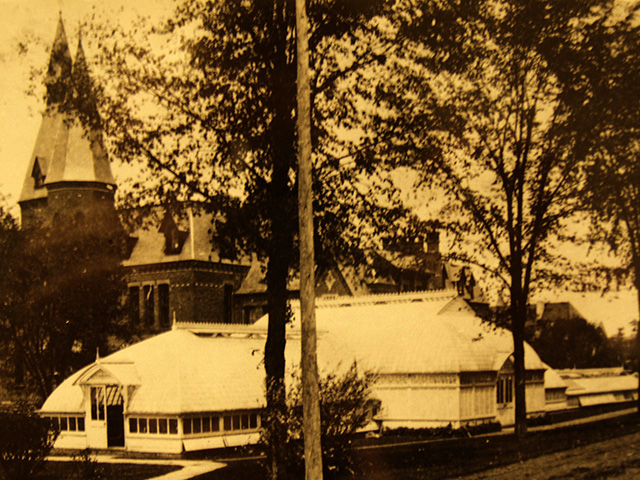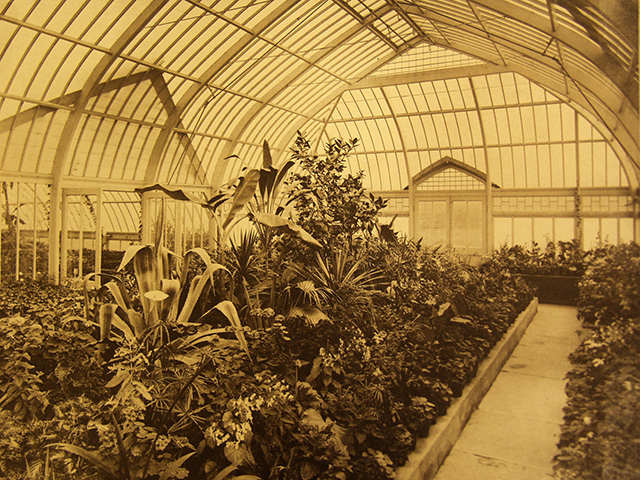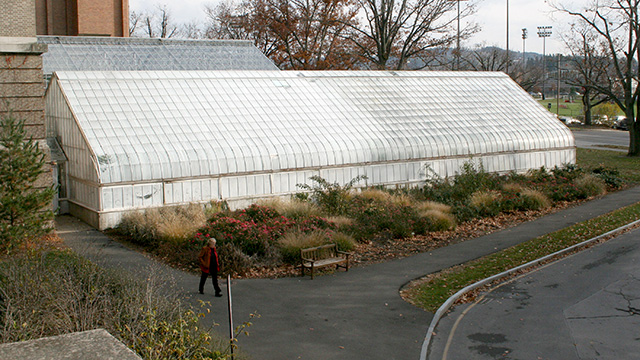The current Liberty Hyde Bailey Conservatory, which opened in 2016, replaced an earlier incarnation constructed in 1931. But even that structure was not the first conservatory on the Cornell University campus.
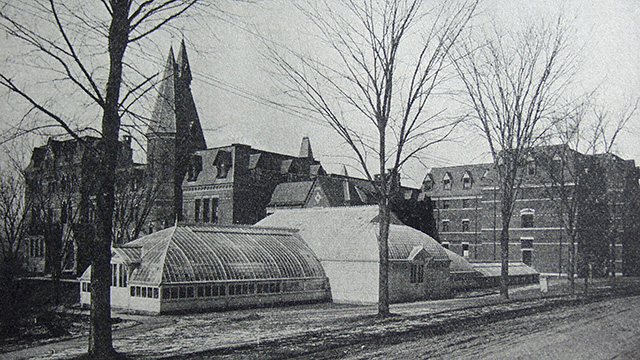
The first botany greenhouses, collectively called the Sage Conservatory (pictured above c.1896), opened in 1882 on the east side of Sage Hall. The five wood-framed greenhouses had a total footprint of 50 by 152 feet and were held at different temperatures to provide varied growing conditions.
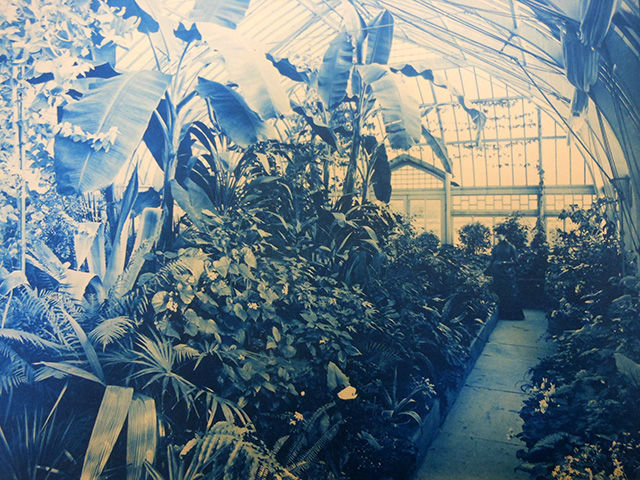
These greenhouses were home to many rare and exotic plants used by the Botany Department for teaching and research. (Pictured above c.1890.) Flowers reared in the Conservatory were also used in Sage Chapel and the President’s house. The greenhouses were sold and removed in 1923.
By that time, newer greenhouses had been constructed on campus. Liberty Hyde Bailey, who was hired by the Botany Department in 1888, started building a forcing house complex (above) south of Barton Hall on what is now Hoy Field in 1889.
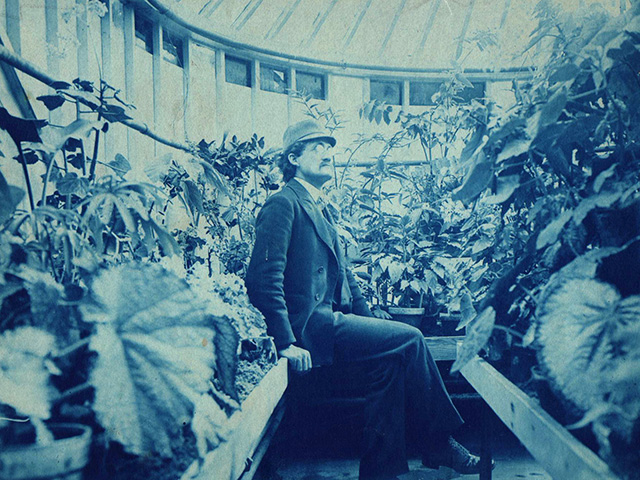
Bailey (in forcing house, above) became the first dean of New York State College of Agriculture in 1903 and persuasively argued that greenhouses were vital to the new college’s mission.
 Construction of iron-frame greenhouses near the present day location of the Plant Science Building and Bradfield Hall began in 1909 shortly after construction of the College’s first buildings. By 1917, about 17 new greenhouses had been built (above with Fernow Hall in the background, c.1913). Six were later torn down in the late 1920s to make way for the Plant Science Building, which opened its doors in 1931.
Construction of iron-frame greenhouses near the present day location of the Plant Science Building and Bradfield Hall began in 1909 shortly after construction of the College’s first buildings. By 1917, about 17 new greenhouses had been built (above with Fernow Hall in the background, c.1913). Six were later torn down in the late 1920s to make way for the Plant Science Building, which opened its doors in 1931.
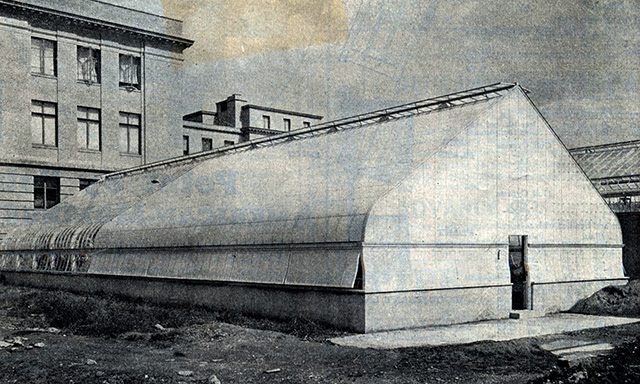
Attached to the south side of the new Plant Science Building was the first Liberty Hyde Bailey Conservatory (above, 1931). The 42- by 92-foot structure was constructed by Lord & Burnham, the premier greenhouse suppliers in the U.S.
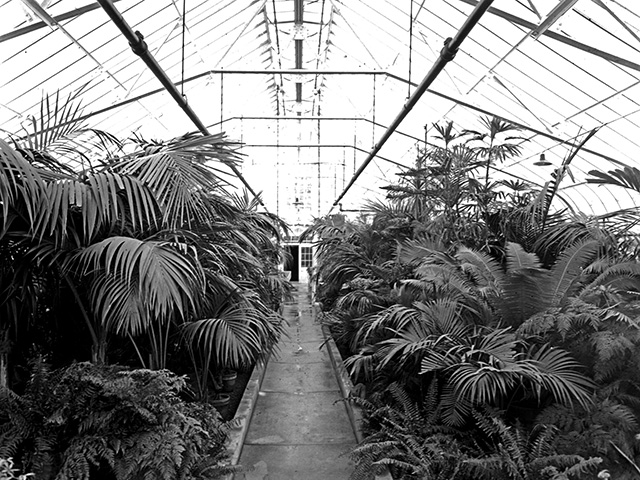
It was divided into two growing rooms: The north room was known as the Student House and the south room the Palm House, home to Bailey’s palm collection and other exotic plants. Bailey began studying palms in the 1920s and traveled the world collecting them.
After 80 years of service, the elegant structure had reached the end of its useful life and was slated for demolition in 2010 and the plant collection was moved to the Kenneth Post Lab Greenhouses. At first, there was no plan to replace the Conservatory. But the Cornell plant science community successfully petitioned the College of Agriculture and Life Sciences and plans emerged to rebuild the Conservatory at its original location on the south side of the Plant Science Building.
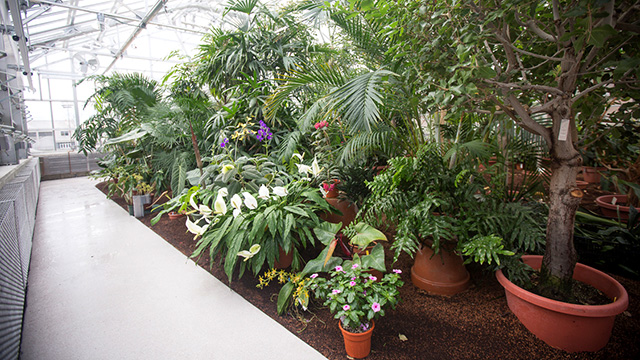
The new Liberty Hyde Bailey Conservatory opened in 2016 and continues a Cornell campus tradition begun more than 130 years ago, providing a home for exotic plants representing more than 80 families from around the world to support hands-on teaching, research and outreach missions of the College of Agriculture and Life Sciences.
For more detailed information on the history of Cornell conservatories, see Chapter 7 of 150 Years of Botany at Cornell, by Edward D. Cobb (2013).
Additional images of Cornell conservatories


